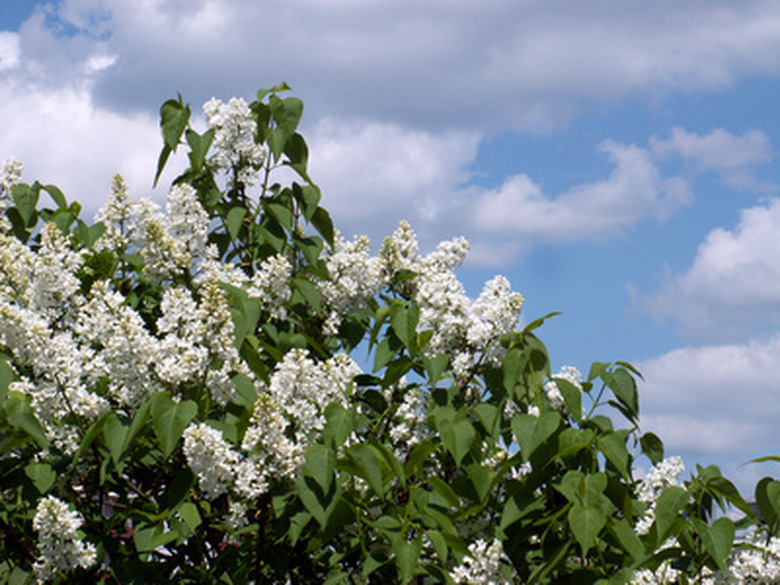Lilac Ivory Silk Tree Facts
"Ivory Silk" is a cultivar of the Japanese lilac tree (Syringa reticulata). This variety is desirable for its profusion of flowers and neat, upright habit, according to the University of Florida. The plant can be cultivated as a large shrub or small-to-medium sized tree that grows on multiple trunks, or a single, straight trunk. Hardy and versatile, the lilac "Ivory Silk" makes an excellent specimen tree.
Size
The Japanese lilac "Ivory Silk" tree grows to an average height of 25 feet, with an average width, or spread, of 15 feet, according to the University of Florida. This tree has an oval-shaped canopy when young that gradually widens into a nicely rounded shape.
Appearance
The leaves of this deciduous tree are dark green and ovate. They have serrated margins (edges) and can be up to 5 inches in length, according to the Missouri Botanical Garden. The small, single-petaled (each bloom has five petals) flowers are creamy-white in color and are clustered on panicles, with are long, tapered stalks. The bark is reddish-brown in color, fading to a gray-brown as the tree ages.
- "Ivory Silk" is a cultivar of the Japanese lilac tree (Syringa reticulata).
- The Japanese lilac "Ivory Silk" tree grows to an average height of 25 feet, with an average width, or spread, of 15 feet, according to the University of Florida.
Climate
Syringa reticulata is a temperate-climate plant. The tree enjoys mild summers and cool or cold winters. The Japanese lilac "Ivory Silk" tree grows best in U.S. Department of Agriculture (USDA) Plant Hardiness Zones 3 through 6, and sometimes into zone 7, according to the University of Florida. It will not grow well in subtropical or tropical climates.
Culture
This tree enjoys locations that receives full sunlight and well-draining soil. It can grow on a wide variety of soils, even poor, urban soils, according to the University of Florida, which makes this tree a good choice for an ornamental or shade tree in populated locales. Plenty of sunlight will help this tree bloom and also prevent fungal diseases from developing. S. reticulata is moderately tolerant of drought conditions. Once established, it does not need supplemental watering, but the soil around young trees should be kept moist during long, hot summers.
- Syringa reticulata is a temperate-climate plant.
- Once established, it does not need supplemental watering, but the soil around young trees should be kept moist during long, hot summers.
Uses
This "Ivory Silk" tree is not only pest and disease-resistant, but it is small enough to fit neatly under power lines and tolerant enough of pollution to line streets and medians. It does not drop seed pods or make messes, so it can be used to line sidewalks and even planted near decks or other places where people congregate. This stunning, fragrant bloomer can also be used as the visual centerpiece of a home garden.
